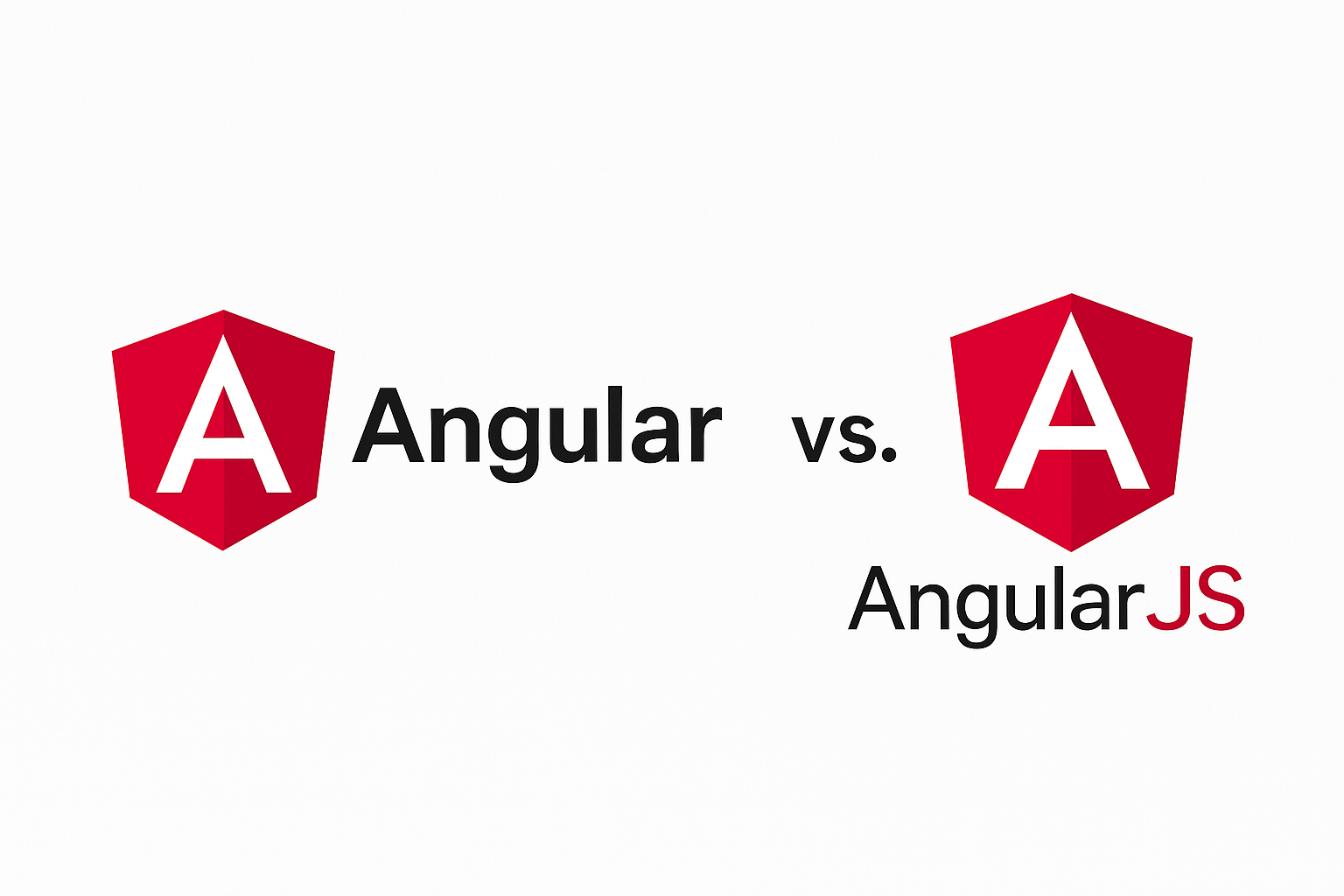In the rapidly evolving world of web development 🌐, frameworks play a critical role in building modern, dynamic, and scalable applications. Among the most popular choices for front-end development are Angular and AngularJS. While their names sound similar, these technologies differ significantly in architecture, performance, language, and more.
This article breaks down the major differences between Angular and AngularJS to help developers, students, and business owners make informed decisions 💡.
What is AngularJS? 🧠
AngularJS is a JavaScript-based open-source front-end framework developed by Google and released in 2010 📅. It was designed to simplify the development of single-page applications (SPAs) by extending HTML with new attributes and binding data easily to the DOM (Document Object Model).
AngularJS is based on the Model-View-Controller (MVC) architecture and uses plain JavaScript and HTML 📜. It was revolutionary for its time, making dynamic content more manageable without the need to constantly refresh pages 🔄.
What is Angular? 🚀
Angular, commonly referred to as Angular 2+, is a complete rewrite of AngularJS by the same team at Google. Released in 2016, Angular is a TypeScript-based framework designed for building scalable and efficient web applications with a component-based architecture 🧩.
Unlike AngularJS, which is more suitable for small to medium-sized projects, Angular is ideal for building large-scale enterprise-level applications with higher performance and maintainability 🏢.
Key Differences Between Angular and AngularJS 🔍
1. Architecture 🏗️
AngularJS: Based on the MVC (Model-View-Controller) architecture.
Angular: Uses a component-based architecture that improves code reusability and organization.
2. Language Used 💻
AngularJS: Written in plain JavaScript.
Angular: Written in TypeScript, offering modern features like static typing and OOP.
3. Mobile Support 📱
AngularJS: Not optimized for mobile devices.
Angular: Fully mobile-friendly and supports responsive web development.
4. Performance ⚡
AngularJS: Slower for large-scale applications due to two-way binding and digest cycles.
Angular: High-performance with AOT compilation and efficient change detection.
5. Data Binding 🔁
AngularJS: Uses two-way data binding.
Angular: Uses one-way data binding for better control and speed.
6. Dependency Injection 💉
AngularJS: Basic dependency injection support.
Angular: Advanced and hierarchical dependency injection system.
7. Directives 🧾
AngularJS: Heavy use of built-in directives with complex syntax.
Angular: Simplified directive system with custom directive options.
8. Routing 🗺️
AngularJS: Uses ngRoute or third-party libraries like ui-router.
Angular: Built-in robust routing module with lazy loading.
9. Tooling and Support 🛠️
AngularJS: Limited tooling options.
Angular: Offers CLI tools, rich IDE support, and automation features.
10. Community and Updates 👥
AngularJS: No longer actively developed (in LTS mode).
Angular: Actively maintained by Google with regular updates and improvements.
Which One Should You Use? 🤔
Choosing between Angular and AngularJS depends on your project goals and tech needs. Here’s a quick guide:
- Maintaining an old app? AngularJS might still work – but start planning to migrate 🔄.
- Starting something new? Go with Angular for a modern, robust foundation ✅.
- Need mobile and desktop support? Angular has you covered across devices 📱💻.
Conclusion 🎯
Both Angular and AngularJS have had a major impact on web development. AngularJS pioneered the way for dynamic apps, while Angular is the evolved, modern version designed for the future 🚀.
For new apps, Angular is clearly the better choice due to its superior performance, mobile readiness, and long-term support 🏆. But understanding AngularJS is still useful for legacy systems and learning the evolution of web frameworks.
We hope this breakdown of Angular vs. AngularJS has helped you grasp their core differences and advantages. Choosing the right framework is the first step toward a successful and scalable web application! 💡

